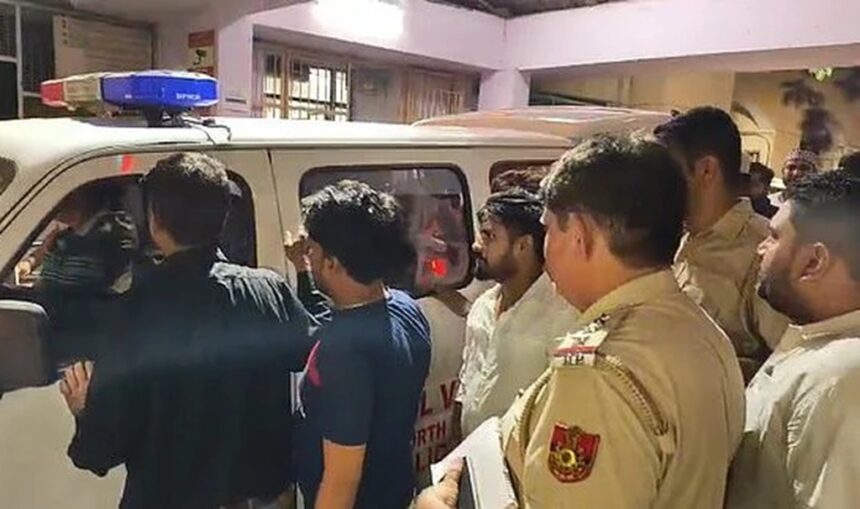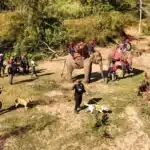NEW DELHI – A man has been arrested following the rape and murder of a nine-year-old girl in Dayalpur, Northeast Delhi, India. Police caught the suspect after a brief encounter, during which he was shot in the leg.
The incident shocked the local community after the girl’s body was found hidden in a suitcase just a day earlier. The accused, who had moved to the neighbourhood about a year ago, was known for his troubling behaviour.
Locals kept their distance from him, and he had a history of causing problems. According to neighbours, people had heard him argue with his wife, who had since left him. Just weeks before the crime, he had been seen causing a disturbance in the area while drunk.
The victim, a Class 5 student in Delhi, went to deliver ice to a relative’s home on Saturday evening. Her grandmother sent her with the ice since their family did not have a fridge. The accused lured her into his flat on her way back, pretending he was locked inside and needed her help. The flat was only about 50 metres from her home.
When the girl did not return, her parents started searching. According to her father, the relatives said she stayed only a few minutes before leaving. Later, someone told the family that she had been seen entering a nearby flat.
Her father broke into the locked apartment and found his daughter inside a suitcase, covered in blood.
She was rushed to a local clinic, then to a hospital where doctors confirmed her death. Police received a call about the crime around 8:40 pm. Officers said that the girl had visible injuries and that a sexual assault was likely.
A case was filed under the Bharatiya Nyaya Sanhita (BNS) and section 6 of the Protection of Children from Sexual Offences (POCSO) Act. Police teams searched for the accused, leading to his arrest after the encounter. Authorities continue to investigate, and the community is still coming to terms with the tragedy.
Teacher Kidnaps and Rapes Student
Meanwhile, police have arrested a school teacher accused of kidnapping and raping his 15-year-old student in the Bansdih police station area. Mohammad Salauddin, 26, was taken into custody and appeared in court on Wednesday.
The girl, who lives in a village within the same police station area, attended a private school where Salauddin taught. He also provided her with extra lessons to help with her high school studies.
The case began on May 21, when the girl disappeared on her way to a coaching class. Her father reported her missing and accused Salauddin of taking her. Police found the teen in the Basti district and detained Salauddin, according to Superintendent of Police Omveer Singh.
During the investigation, the girl told officers that Salauddin kidnapped her and took her to Basti, where he sexually assaulted her. Based on her account, police added more charges under the Bharatiya Nyaya Sanhita (BNS) and the Protection of Children from Sexual Offences (POCSO) Act. Police completed the required steps and sent Salauddin to jail.
Child Sexual Abuse in India
Child sexual abuse remains a major problem in India, with social, legal, and cultural barriers making it hard to address. Deep-rooted gender bias often leads to violence against women and children being ignored or excused, which makes it harder for victims to speak up.
Research by the Ministry of Women and Child Development shows that 53% of children have faced some form of sexual abuse, and 20% have experienced severe cases such as rape.
UNICEF reported in 2014 that 42% of Indian girls suffer sexual abuse before turning 19.
The National Crime Records Bureau reported 13,766 cases of child rape in 2014, but experts believe the real number is much higher. In 2023, Kerala alone recorded 1,677 penetrative sexual assaults against children, showing a rise in some regions.
Estimates say that up to 71% of rape cases, including those involving children, are not reported. Reasons include fear of stigma, threats of revenge, and distrust in authorities. A United Nations study found that only 11% of sexual assault cases are reported worldwide, and India likely sees similar trends.
Laws such as the POCSO Act and strong public response have helped bring some changes, but low conviction rates, underreporting, and social stigma still block access to justice. Real progress depends on updating laws, changing attitudes, and giving survivors the support they need.














